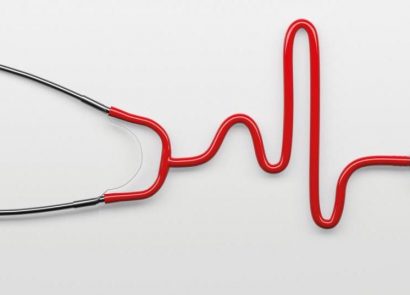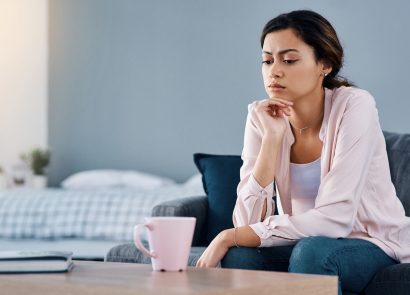With so many of us stuck at work 9-5, Monday to Friday, it’s no wonder our back suffers for it. It’s far too easy for us to slouch at our desks for eight hours, then get in the car home just to slouch some more there. If this sounds like you, incorporate our natural back cures into your day-to-day life, and save some money on all the painkillers.
1. Have a stretch
Spending the working day at your desk? It’s time to make a move. Last year, the British Chiropractic Association found that a quarter of Brits who have suffered back or neck pain have been deterred from exercise. “While total rest may seem like a good way to recover from back or neck pain, often continuing moderate physical activity will help in the long run,” says chiropractor, Catherine Quinn. “Staying active (and warming up properly) is one of the best ways to keep your body strong, and moderate exercise and stretching should be incorporated into your daily routine.”
Pain killer
Get moving! Caroline recommends slotting regular breaks into your day, during which you can walk around the desks, do some stretches and even try a few shoulder shrugs. If you’re in pain, try staying active with low-intensity activity.
2. Try a DIY massage
Whether you’ve slept awkwardly or overdone it in the gym, if your back pain can be attributed to muscular aches, try making a DIY massage tool. “Place a tennis ball in a sock and lie with the muscles on the side of the spine pressed onto the ball,” says Mr. Michael Fatica, The Mayfair Clinic’s lead consultant osteopath. “Next, slowly slide up and down the ball for a minute or two. Treat both sides.”
Pain killer
If your muscles go into spasm, begin with the DIY massage described above (a couple of minutes on each side). Try combining gentle movement, such as walking, with putting ice on the base of the spine for five minutes. Repeat several times daily.
3. Get some strength
Prevention is always better than cure, and alongside regular cardiovascular exercise, strength training is a must-do. “Strengthening the muscles in your back can be very beneficial in preventing problems from developing,” agrees Alex Clark, physiotherapist for Neo G. “Back pain can also originate from a weak core. In fact, Brazilian researchers found that cyclists with lower backache reported a 44 percent pain reduction after completing a core strengthening programme. So, exercises that strengthen your abdominal muscles will be beneficial in preventing back problems.”
Pain killer
Try doing 15 minutes of exercises, such as a bridge hold followed by the cat-cow yoga pose, to develop back strength. Add in planks and other abdominal moves to boost core stability.
4. Stand up straight
“Back pain is often a result of an ongoing misalignment of the head, neck and back,” says Antonella Cavallone, of The Society of Teachers of the Alexander Technique (STAT). “Your head weighs 4-5kg, and that’s a lot of weight to have pulling down from the top of your spine!” Poor postural habits compress intervertebral discs and shorten the surrounding muscles, resulting in muscle tension. The good news? Learning to improve your posture can help.
Pain killer
Reset your posture by practicing the semi-supine position for 10 minutes each day.
To do this, lie on your back on a firm surface, with your head supported by some books, knees bent and feet flat on the surface. An Alexander Technique teacher can show your many more posture-boosting techniques.
5. Reach for magnesium
Muscle tightness is a common cause of back pain – but magnesium could help. “The mineral magnesium has many important roles in your body, and one of them is to support healthy muscle function,” reveals nutritionist Cassandra Burns. “Green vegetables, nuts and seeds, fish and whole grains are among the best food sources. Taking extra magnesium in supplement form could also help.”
Pain killer
Want a quick fix? Try Sense for Joint & Bone superfood supplement powder (£6.99 for 35g), which contains magnesium as well as other back-friendly ingredients, such as rosehip and bananas, which both help prevent joint damage and inflammation.
6. Quench your thirst
There are so many reasons to stay well hydrated – it keeps skin supple and energy levels up – but here’s one you may not have thought of: chronic dehydration could cause pain and stiffness. Why? Because the joints and spinal discs are partly made up of water. Cassandra recommends drinking 1.5-2l of water or herbal teas throughout the day.
Pain killer
Give your coffee drinking habit the heave-ho. “Coffee and tea can contribute to dehydration,” adds Cassandra. “Plus, some foods and drinks can worsen pain or inflammation. These include sugary foods, refined carbohydrates, coffee, fizzy drinks, alcohol and too much red meat.”
7. Cook with turmeric
Turmeric tops the list of natural ingredients that can be used to reduce joint pain and inflammation. The old Indian spice contains the phytochemical curcumin, which is anti-inflammatory and responsible for turmeric’s yellow pigment. Clinical trials have compared turmeric’s anti-inflammatory properties to those of non-steroidal anti-inflammatory drugs (NSAIDS) and found it to be effective.
Pain killer
For a quick anti-inflammatory fix, try a turmeric shot. The Turmeric Co shot drinks (£3.50) were created to help reduce inflammation and boost the immune system, making it a great alternative to traditional anti-inflammatory medication.
8. Sign up for Pilates
Pilates is more than just a good exercise – it’s also great when it comes to supporting your back. By targeting small muscles as well as big ones, it supports joints and helps to alleviate pain. A plethora of studies support its effectiveness as a treatment for a multitude of back problems, with one from Leeds Beckett University concluding that it could be cheaper than manual therapies. Do it twice a week to reap rewards.
Pain killer
Clinical Pilates can be a great tool for those experiencing back pain, as it helps mobilise the spinal, pelvic and hip joints while building strength around the spine. For a taster workout, and to find out more about clinical Pilates, visit yourpilatesphysio.com
9. Mind your mattress
Tossing and turning at night? Rolling around in pain? Sleep gives your body the chance to recover, so having a mattress that exacerbates back pain isn’t ideal. Researchers from Spain revealed that those suffering with long-term back pain experienced fewer problems when sleeping on a medium-tofirm mattress than on a soft mattress. An orthopaedic mattress may make a great choice, as these allow body weight to be evenly distributed on the bed.
Pain killer
Joy Richards, sleep expert at Happy Beds, has these healthy sleep tips: “Sleep on your right hand side with your knees bent, as this is good for blood flow. Make sure you have a good, comfortable pillow to fill the gap between your neck and shoulders, and rotate and flip your mattress on a regular basis.”
10. Opt for the extras
If lifestyle measures aren’t providing relief, it’s time to consider what alternative treatments are available. But don’t reach for the painkillers just yet! Try heated pads. These handy fixes can help boost recovery time, treating muscle and joint pain by improving the blood flow and circulation to the back of the neck. Back supports can also be handy, as they support and stabilise weak or arthritic areas during activity.
Pain killer
Want extra help? Try Neo G’s medical grade back support and rehabilitation products. If you continue to suffer, your GP or physiotherapist will be able to tailor a treatment plan that can ease the pain.




















